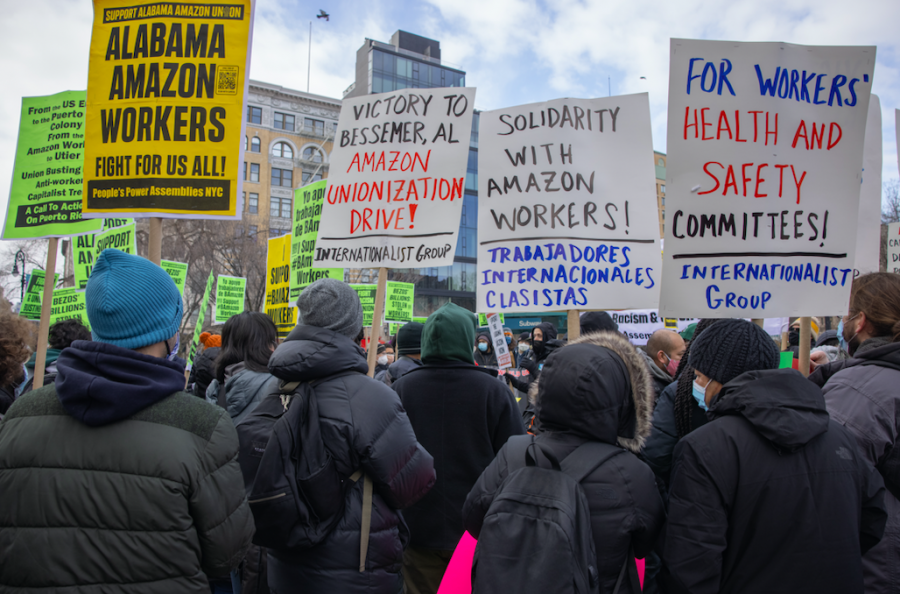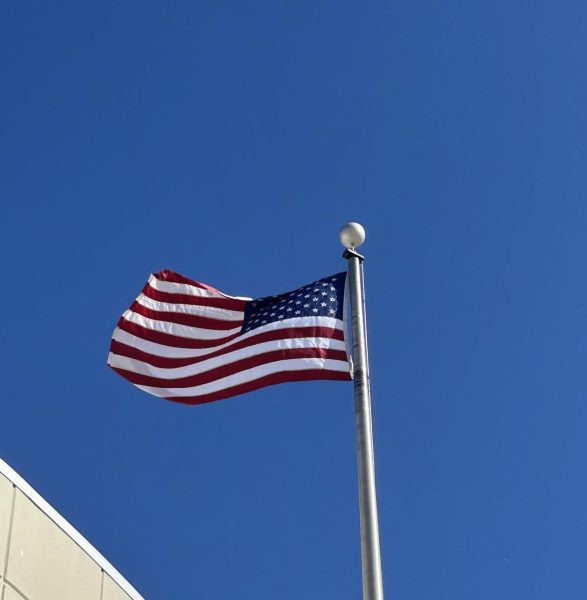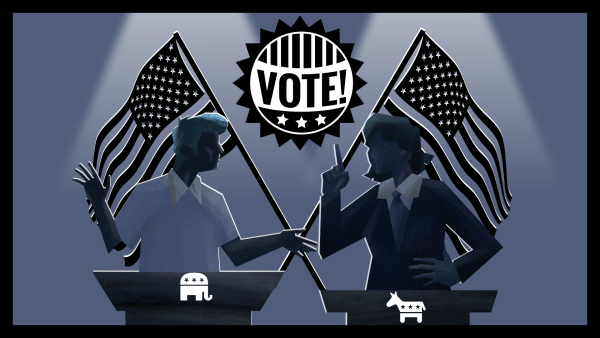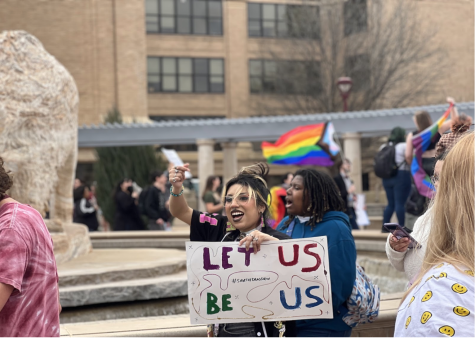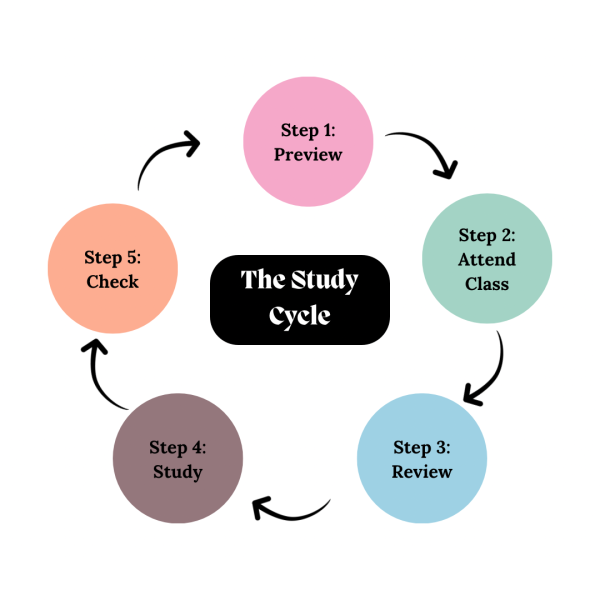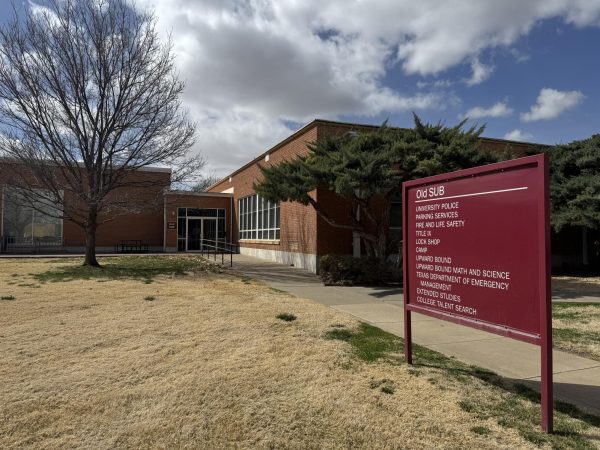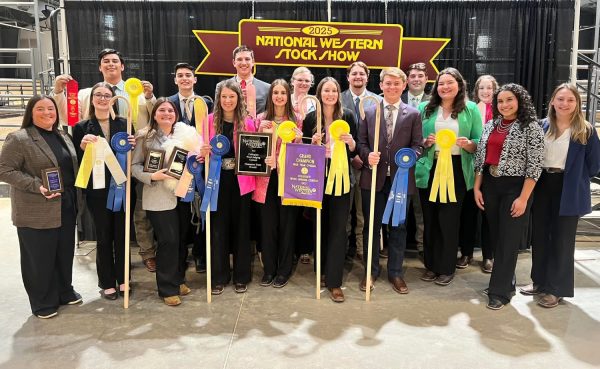U.S. workers strike around the country
NEW YORK, N.Y. – Feb. 20, 2021: Demonstrators rally in Union Square Park in support of Amazon warehouse workers in Bessemer, Alabama who are seeking to form a union.
At the peak of 100,000 on Oct. 14, 2021, workers from multiple private and public sector jobs around the country joined together and authorized union strikes against corporate interests in what has been dubbed “Striketober”.
Unions around the United States have been on a downward trend since the end of World War II, with the rise of the red scare and the Taft-Hartley Act of 1947. Current union membership in the U.S. is at 10.8 percent and 14.3 million workers, compared to the levels of 1983, which is the first year we have comparable union data, which was 20.1 percent and 17.7 million union workers.
“It’s good that Starbucks in New York are unionizing, because even if it may not immediately lead to unionizing in the panhandle, it’s going to create a national infrastructure that drags a lot of places that wouldn’t otherwise unionize into that union mold,” said Dr. Christopher Macauley, assistant professor of political science.
With the rise of social media and activism on this new medium, people are discussing banding together for the advancement of their conditions. Currently, there are 60,000 IATSE (International Alliance of Theatrical Stage Employees) members, 1,400 Kellogg workers, more than 10,000 John Deere workers on strike, hundreds of hospital workers, teachers in Pennsylvania, Starbucks workers in upstate New York and so many other U.S. workers and their labor groups are recognizing the tight labor market as a time for progress to occur in the workplace.
The recent events of the Alec Baldwin shooting could be seen as a result of the IATSE Local 44 union members not being on site at the shooting location for “Rust”, per reporting by IndieWire. Several safety checks are necessary to prevent actions like the current events and they were not performed on the set in Santa Fe, NM to prevent live ammunition in the weapon from being given to the actor Alec Baldwin that injured three people.
When discussing the history of unions in America, Macaulay stated that the early demands of the unions were “certain hour days, we want time off and we want minimum wage.”
These early demands of the working class were centered around providing basic universal things for respect in the workplace. Workers during the early 20th century were subjected to inhumane conditions. We have since obtained these conditions in the U.S., but while the rest of the world is advancing its workers’ interests, the U.S. has remained in the past. The U.S. is the only developed country in the world to have zero guaranteed hours of national paid leave.
“The liberal vision of the farmers is an independent farmer who does his thing and it aligns with that conservative leave me alone kind of attitude, but it has an egalitarian element to it as well,” Macaulay said when talking about the early labor movements. “ Leave me alone, but I get my chunk, 40 acres and a mule.”
The populist movements of the early 20th century were centrally located in our region of the U.S. around Kansas, the Dakotas and even in the Texas Panhandle. The Great Plains were the reigning of the agriculture workers and when they banded together across racial lines, there was progress and an immense pushback from the ruling classes of America, which at that time was the pre-civil rights Democratic Party. These agriculture workers were the majority of the country and with the shift of urbanization, the majority of workers in the US work in the service industry.
The populism movement “would re-emerge under Franklin Delano Roosevelt and was one of the reasons F.D.R. was successful in the countryside. Why? New Deal, Texas is right north of Lubbock, It’s not a coincidence,” Macauley said.
The High Plains and Texas Panhandle are one of the most republican areas of the US, but the former views of populism still remain today, just with a different face. These labor movements are galvanizing the newer generations who have gone through an economic depression every few years. America will see if the current labor movements continue in their directions of militarization or fizzle out as they have for so many years.
“They’re trying to blame the workers, those lazy Millennials or Zoomers or whatever, but it’s a position of power and if there’s a time to push for your rights, it’s right now,” Macauley said while being hopeful for the future of workers rights.



